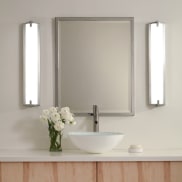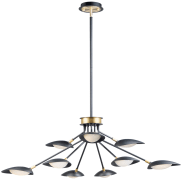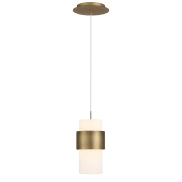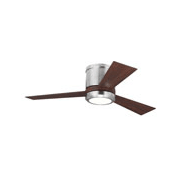Why You Should Use LED Lights for Your Indoor Garden
7 reasons why LED lights are a great choice for growing indoor plants
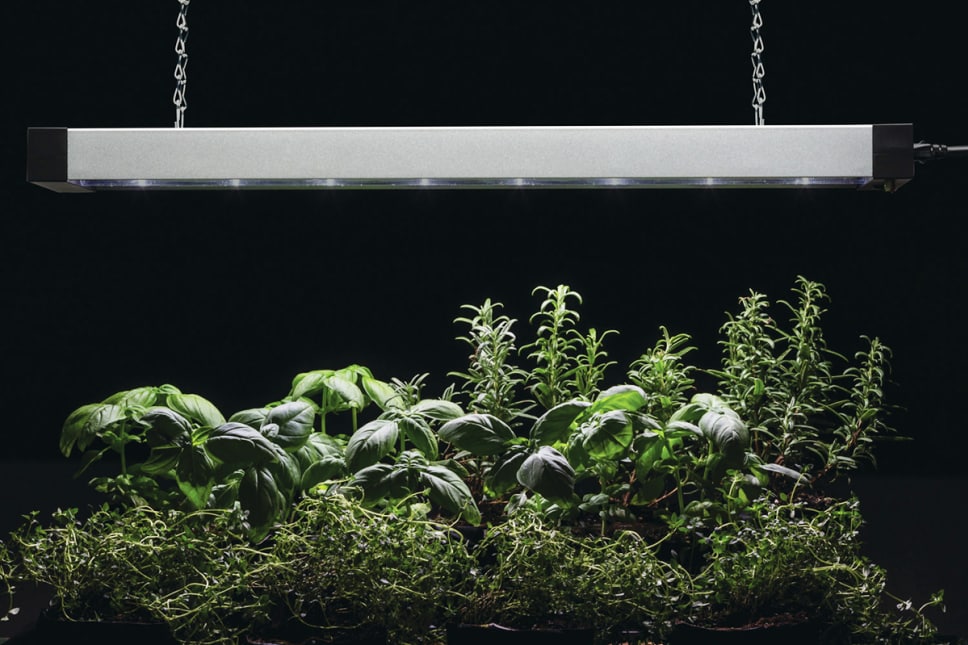
It wasn’t until the late 1800s that mankind gained better control over their gardening practices with the invention of the electric light. Thanks to Thomas Edison, no longer would the cycle of day and night dominate the pursuit of bigger, better vegetation! Nearly a century and a half later, continued advances in science have opened the doors to new achievements in efficiency and targeted application, culminating in the light-emitting diode (LED) which allows for unprecedented energy economy, flexibility, and yield.
To help you grow better herbs, veggies and plants, here are just a few reasons why you should consider using LED lighting for indoor gardening.
1. LED Lights Last Longer
LED lights are designed for longevity. They last up to ten times longer than other grow-light options, functioning for an average of 50,000 hours. That’s the equivalent of over 5 years of continuous operation. Used half the time, as is often the case with plants requiring periods of darkness, that lifespan can be stretched for nearly 11 years!
Additionally, LED bulbs don’t fail instantly, as most other lighting technologies do. LEDs slowly dim as they near the end of their usable lives, warning you ahead of time that you will need to replace them. A bonus of this characteristic is that they’re still putting out light your plants can use as they fade, so you can afford to wait a bit instead of replacing the bulbs immediately.
2. LEDs Allow Greater Flexibility
The design of modern LED light fixtures allows for more deployment options. They are smaller and weigh less than many other grow light options. Reduced sizes mean they can fit around plants placed closer together, allowing for plant configurations that use available light more effectively. Lighter weights mean they can be suspended from lower-grade structures. Many other designs would require reinforced, industrial-grade ceilings or a specially built apparatus to hold the weight of the grow lights and associated ballasts. LED lighting for indoor gardening can be safely suspended from most common home interior ceilings with simple hardware.
3. Produces Less Heat
Every good gardener knows the value of getting the light source as close to the plants as possible. This maximizes exposure while minimizing wasted light lost to the surroundings. In the past, this was complicated by the heat output of the lights being used. The plants need the light, but the excessive heat could cause them to wither or grow abnormally.
Using LED lights offer a solution to this problem by emitting less heat than other types of light fixtures. Consequently, LEDs can be placed closer to individual plants or near close-spaced groupings of plants without causing heat damage to the sensitive flora.
4. LED Grow Lights Offer Targeted Wavelengths
When it comes to plants, not all light is created equal. Plants grow best when exposed to enough quantities of light in specific wavelengths. Studies have shown that plants generally grow best when exposed to light in the 400 to 500 nanometer (nm) and 600 to 700 nm ranges.
- Shorter Wavelengths - Correspond to blue colors and have been demonstrated to promote vegetative growth.
- Longer Wavelengths - Correspond to red colors and have been shown to stimulate the flowering phase of plants.
Since LED lights can be configured to narrowly target specific wavelengths of light, you now have the ability to target specific wavelengths and achieve a high-degree of efficiency in terms of optimal light absorption by plants. If done correctly, none of the light generate falls into a color spectrum that plants can’t do anything with, so all the energy the LEDs produce goes directly into helping the plants grow.
5. Energy Efficient Lighting
In addition to converting more energy into useful wavelengths of light and having the ability to be placed in better positions for light absorption, LEDs are also more energy efficient than traditional bulbs – a feature that will also benefit your wallet.
LED lights draw considerably less electricity to operate than other types of grow lights and do so without comprising the quality of the plant you grow. In fact, a recent study out of Purdue University compared the results of tomato’s grown with LED lighting and less-efficient high-pressure sodium (HPS) lamps. Researchers concluded that the tomato’s grown with LED lighting “did not negatively affect greenhouse tomato fruit quality” and showed promise for commercial growers for their energy-saving potential.
Less money out of your pocket for electricity translates into more money for other supplies to sustain and grow your garden.
6. LED Lighting is the Future
As the world becomes increasingly energy conscious, new regulations are regularly being drafted and signed into law mandating the use of products that use power more effectively. All around the world, traditional incandescent bulbs are being phased out in favor of technologies that sip power more judiciously. This trend will only continue.
LEDs consume the lowest amount of energy for their output of any technology currently available and have been shown capable of providing the same benefits as other lighting options. As a result, it seems highly probable that they will become the standard grow lights of a cleaner, more energy-conscious and environmentally aware world.
This isn’t just dependent on those with indoor gardens, either. Everyone will benefit by upgrading to integrated LED light fixtures in their home or office.
7. Getting the Most from Your LED Grow Lights
When implementing your own LED grow light solutions, keep the following guidelines in mind.
- Hang larger lighting assemblies near the tops of your plants.
- Cluster plants around smaller LEDs so all angles are covered.
- Choose LEDs that have been designed specifically to pinpoint the wavelength your foliage needs most.
- Use LED bulbs with the highest light output you can find.
- Pay attention to a bulb’s rated hours and energy consumption, so you can get the most bang for your buck.
Man’s harnessing of electric light not only marked a turning point for civilization, but also a significant advancement for indoor gardening practices. Today’s technology has leaped so far ahead of those early, primitive bulbs, it’s almost difficult to believe. Modern LED lighting options offer superior light output, flexibility, and cost effectiveness that make them good choices for today’s indoor gardener. By strategically using this type of lighting you can improve the yield of your garden, while reducing your energy costs and carbon footprint.


